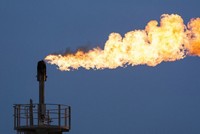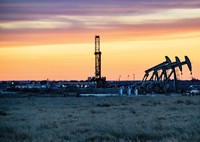Advertisement
Grab your lab coat. Let's get started
Welcome!
Welcome!
Create an account below to get 6 C&EN articles per month, receive newsletters and more - all free.
It seems this is your first time logging in online. Please enter the following information to continue.
As an ACS member you automatically get access to this site. All we need is few more details to create your reading experience.
Not you? Sign in with a different account.
Not you? Sign in with a different account.
ERROR 1
ERROR 1
ERROR 2
ERROR 2
ERROR 2
ERROR 2
ERROR 2
Password and Confirm password must match.
If you have an ACS member number, please enter it here so we can link this account to your membership. (optional)
ERROR 2
ACS values your privacy. By submitting your information, you are gaining access to C&EN and subscribing to our weekly newsletter. We use the information you provide to make your reading experience better, and we will never sell your data to third party members.
Environment
Petroleum's Other Emissions
Climate Change: Scientists generate first-ever estimates of greenhouse gas emissions from oil development
by Charles Schmidt
October 26, 2010

To make room for biofuel crops, farmers slash rainforests and other vegetation that absorbs carbon dioxide from the atmosphere. And that's a problem for the climate. But a new study points out that conventional oil development also requires changes to the land that destroy CO2 sinks and produce their own greenhouse gas emissions (Environ. Sci. Technol., DOI: 10.1021/es1013278).
Previous research has suggested that land use associated with biofuel production, such as clearing grasslands to plant corn for ethanol, could lead to producing more net CO2 than it saves from not burning fossil fuel.
"But no one had calculated the land-use emission from fossil fuels, so they weren't comparable on an apples-to-apples basis," says Sonia Yeh, a researcher at the Institute of Transportation Studies, at the University of California, Davis.
So Yeh and colleagues decided to quantify greenhouse gas emissions from two types of oil production: conventional development from oil fields in California and Alberta and development from oil sands in Canada, which contain the viscous petroleum mixture called bitumen. Engineers extract bitumen either by in-situ processes, in which they heat it with steam and then pump it to the surface, or by surface mining, in which they burn down arboreal forests and dig up overlying peat deposits to reach oil sands.
The researchers accounted for land-use emissions from several factors, such as greenhouse gases released when burning vegetation or the loss of natural CO2 sinks. One especially harmful consequence of surface mining is peat removal. Peat absorbs huge amounts of CO2 from the atmosphere, and when it's destroyed, its decomposition releases methane, a much more potent greenhouse gas than CO2.
Not surprisingly, the researchers found that surface mining leads to the greatest emissions of the production methods: For every hectare of disturbed land, the process produces about 3,600 tons of greenhouse gases. Meanwhile, in-situ oil-sands production emits about 200 tons of greenhouse gas per hectare, and conventional oil development in California and Alberta releases about 70 and 160 tons per hectare, respectively.
In comparison to emissions associated with biofuels production, surface mining's only rival is palm biodiesel production in the Indonesian and Malaysian rainforest, which releases about 3,500 tons of greenhouse gases per hectare, according to a 2008 study in Science . But surface mining only produces about 11% of the lifetime emissions from oil sands, with the rest coming from transport and combustion of the developed oil.
Also, when Yeh's team controlled for the energy output of each fuel, all four fossil fuel production methods emitted significantly less than biofuel production. For example, compared to surface mining, palm biodiesel production leads to about 140 times more greenhouse gas emissions per megajoule of energy created.
Still, the fossil fuel numbers underscore the need to minimize carbon losses, especially during surface mining, says Eddy Isaacs, a chief environmental officer at Alberta Innovates, an agency funded by the Alberta government: "It gets us thinking about land-use emissions, especially during the exploration phase."




Join the conversation
Contact the reporter
Submit a Letter to the Editor for publication
Engage with us on Twitter